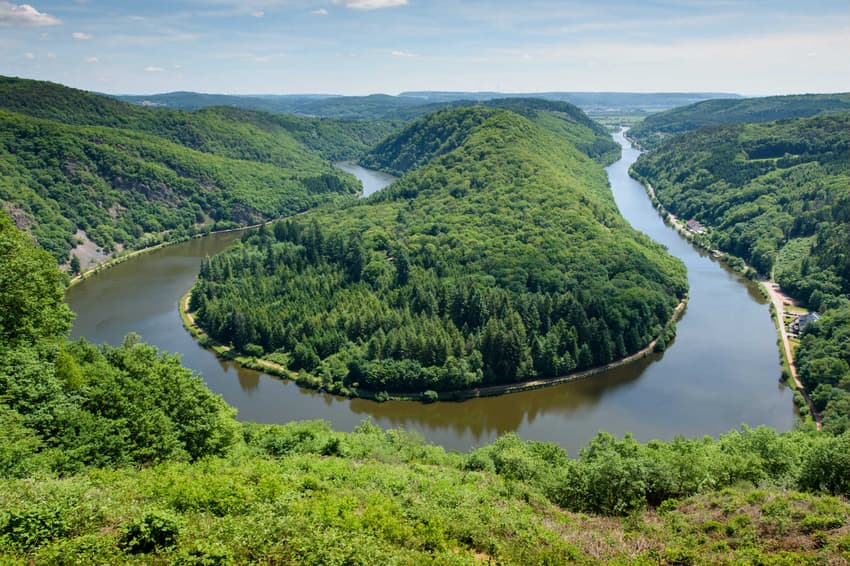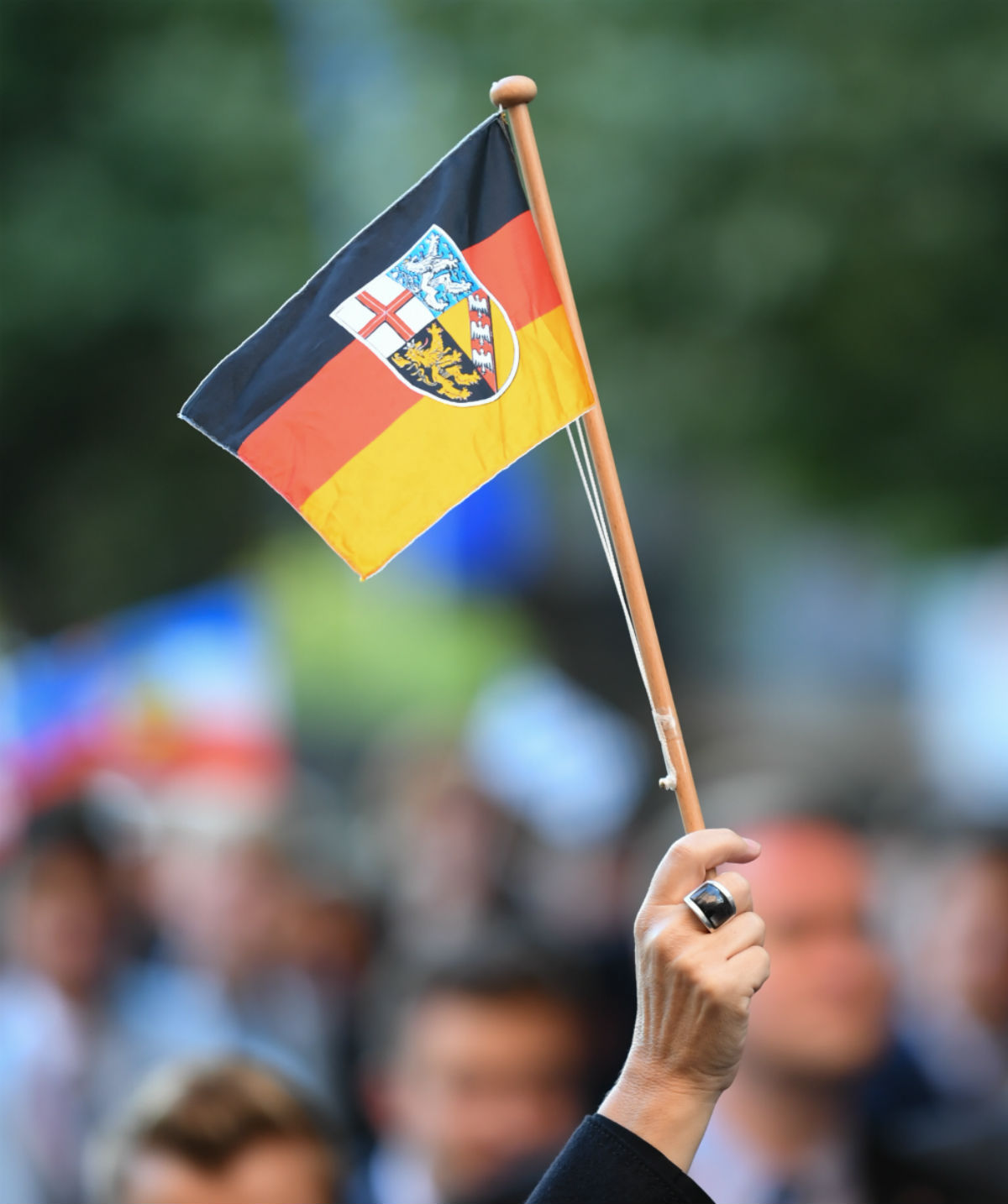Big birthday in a small state: Saarland celebrates its 100-year old history

On Friday, the southwestern state of Saarland celebrates its hundred-year history and with it, the birth of its own unique character, which emerged after the birth of the region.
In the beginning, the small region was considerably French. But when the Treaty of Versailles came into effect on January 10th, 1920, the name “Saar” emerged as a political entity, as the “Saar Region”.
A century on the Saar - dubbed the “Saar Hundred” in celebration of this historic anniversary - is now being commemorated with a travelling exhibition, excursions and numerous festivals. It will all kick off on January 10th with a New Year's reception of State President Tobias Hans (CDU).
READ ALSO: Six things you need to know about Saarland - Germany's little France
Along with the anniversary, the Saarlanders are also celebrating their own unique identity. "It was only after 1920 that the Saarlanders began to develop their own mentality," says Jochen Wagner from the State Chancellery and organizer of the "Saar Hundred" program.
"Before, there was Prussia and Bavaria. But the core of the Saarland has always remained the same right from the start, even if it has grown by a fifth compared to 100 years ago. Because of its history, there is something unusual about the Saar: the mental boundaries are identical to the national borders."
What is the ‘Saar area’?
The “Saar area” - including its industrial cities, mines and catchment areas for workers nearby - was established as an “Objet d’art” 100 years ago, as France sought to secure access to the Saar coal after the First World War as a means of reparations for war damage.
Further border changes followed in subsequent years, even after the Second World War: "But the matter was settled in 1957,'' explained Reiner Jung, the deputy director of the Saarland Museum of History.
It was then that the Saarland became the youngest federal state in the Federal Republic. Today, Germany's smallest state has just under one million Saarlanders.
The Saarland, which borders France, has a unique history to look back on, said Jung. “Nowhere else in Germany has a history like this. It was separated from Germany twice.”
In 1920 the region was separated from the German Reich and placed under the mandate of the League of Nations with an international commission.
In 1935 the Saarland returned to Germany after a referendum in which a good 90 percent of the population voted in favour of returning.

A German flag bearing the coat of arms of Saarland Source: DPA
French roots
The second unusual course came after the Second World War, when, at the beginning of 1946 the Saarland was outsourced from the French occupation zone and was given own constitution.
The state was economically connected to France, and there was also a strong French influence in terms of education and culture, although there was increasing opposition to this. In 1955 the Saarlanders voted against the Saar Statute and thus for the return to Germany.
"That was the Saarland’s special way," says Wagner, who is head of public relations for the state government. "We could have turned in a different direction many times."
READ ALSO: Saarland celebrates 60 years of 'yes' to Germany
The Saarlanders' desire to come back to Germany also contributed to their sense of identity: People said: “We Saarlanders, we from the Saar." The Saarland mentality has also evolved, "because we didn't belong to anyone, just ourselves. We were externally managed for a long time".
To this day, history has shaped the Saarlanders: there is local patriotism and a strong culture of volunteering, which is also based on the solidarity of the Saarlanders.
"In Saarland, we have proportionally the highest number of volunteers nationwide in relation to the number of residents," says Wagner. In addition, the number of Vereine is very high: There are Saarlanders who are active in seven or eight clubs.
In order to bring the Saar history to life, it is going on tour in the “Saar Hundred” as a travelling exhibition to municipalities and schools in the state.
Translated by Sarah Magill
Comments
See Also
In the beginning, the small region was considerably French. But when the Treaty of Versailles came into effect on January 10th, 1920, the name “Saar” emerged as a political entity, as the “Saar Region”.
A century on the Saar - dubbed the “Saar Hundred” in celebration of this historic anniversary - is now being commemorated with a travelling exhibition, excursions and numerous festivals. It will all kick off on January 10th with a New Year's reception of State President Tobias Hans (CDU).
READ ALSO: Six things you need to know about Saarland - Germany's little France
Along with the anniversary, the Saarlanders are also celebrating their own unique identity. "It was only after 1920 that the Saarlanders began to develop their own mentality," says Jochen Wagner from the State Chancellery and organizer of the "Saar Hundred" program.
"Before, there was Prussia and Bavaria. But the core of the Saarland has always remained the same right from the start, even if it has grown by a fifth compared to 100 years ago. Because of its history, there is something unusual about the Saar: the mental boundaries are identical to the national borders."
What is the ‘Saar area’?
The “Saar area” - including its industrial cities, mines and catchment areas for workers nearby - was established as an “Objet d’art” 100 years ago, as France sought to secure access to the Saar coal after the First World War as a means of reparations for war damage.
Further border changes followed in subsequent years, even after the Second World War: "But the matter was settled in 1957,'' explained Reiner Jung, the deputy director of the Saarland Museum of History.
It was then that the Saarland became the youngest federal state in the Federal Republic. Today, Germany's smallest state has just under one million Saarlanders.
The Saarland, which borders France, has a unique history to look back on, said Jung. “Nowhere else in Germany has a history like this. It was separated from Germany twice.”
In 1920 the region was separated from the German Reich and placed under the mandate of the League of Nations with an international commission.
In 1935 the Saarland returned to Germany after a referendum in which a good 90 percent of the population voted in favour of returning.

A German flag bearing the coat of arms of Saarland Source: DPA
French roots
The second unusual course came after the Second World War, when, at the beginning of 1946 the Saarland was outsourced from the French occupation zone and was given own constitution.
The state was economically connected to France, and there was also a strong French influence in terms of education and culture, although there was increasing opposition to this. In 1955 the Saarlanders voted against the Saar Statute and thus for the return to Germany.
"That was the Saarland’s special way," says Wagner, who is head of public relations for the state government. "We could have turned in a different direction many times."
READ ALSO: Saarland celebrates 60 years of 'yes' to Germany
The Saarlanders' desire to come back to Germany also contributed to their sense of identity: People said: “We Saarlanders, we from the Saar." The Saarland mentality has also evolved, "because we didn't belong to anyone, just ourselves. We were externally managed for a long time".
To this day, history has shaped the Saarlanders: there is local patriotism and a strong culture of volunteering, which is also based on the solidarity of the Saarlanders.
"In Saarland, we have proportionally the highest number of volunteers nationwide in relation to the number of residents," says Wagner. In addition, the number of Vereine is very high: There are Saarlanders who are active in seven or eight clubs.
In order to bring the Saar history to life, it is going on tour in the “Saar Hundred” as a travelling exhibition to municipalities and schools in the state.
Translated by Sarah Magill
Join the conversation in our comments section below. Share your own views and experience and if you have a question or suggestion for our journalists then email us at [email protected].
Please keep comments civil, constructive and on topic – and make sure to read our terms of use before getting involved.
Please log in here to leave a comment.